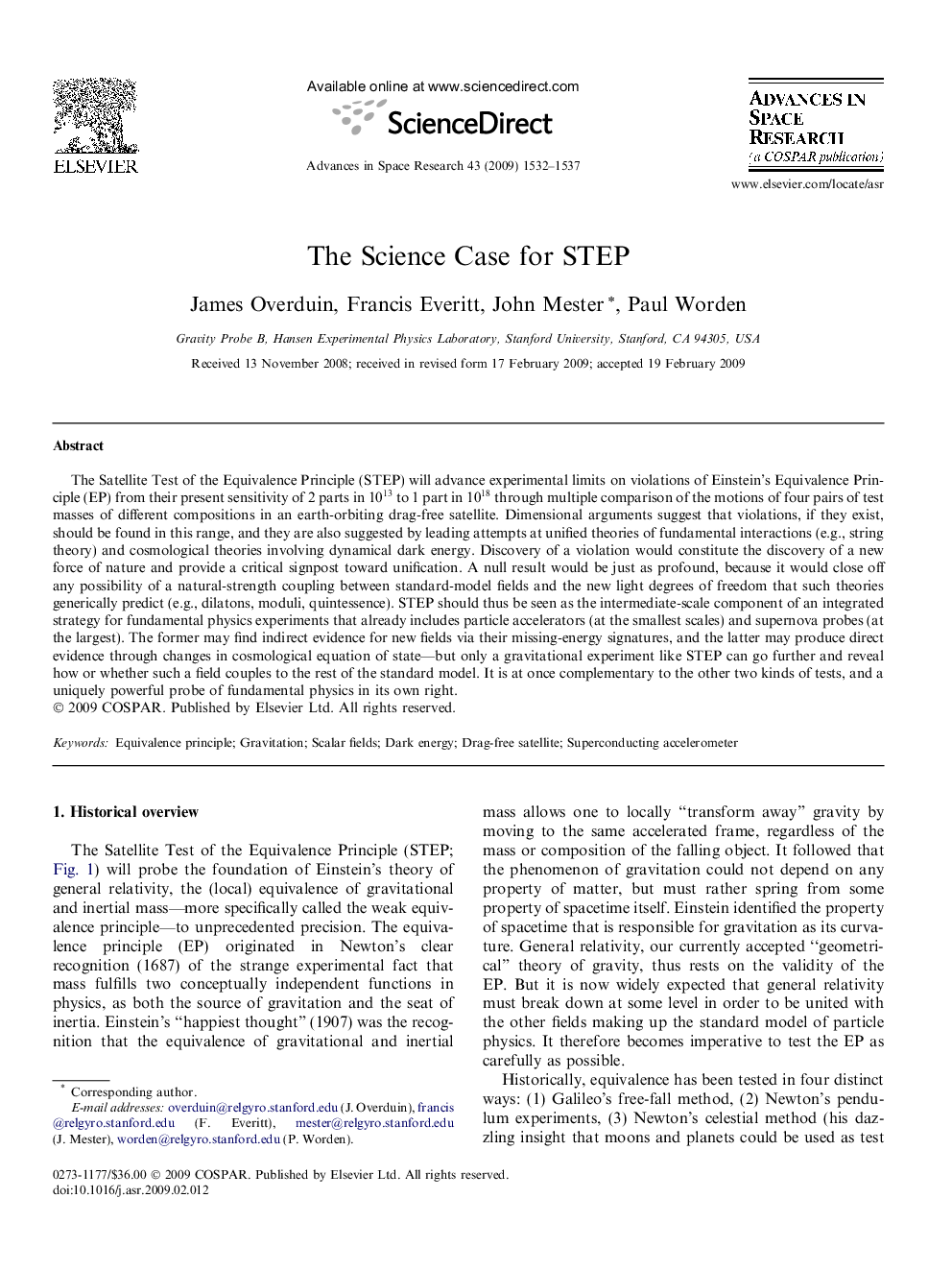| کد مقاله | کد نشریه | سال انتشار | مقاله انگلیسی | نسخه تمام متن |
|---|---|---|---|---|
| 1766901 | 1020169 | 2009 | 6 صفحه PDF | دانلود رایگان |
عنوان انگلیسی مقاله ISI
The Science Case for STEP
دانلود مقاله + سفارش ترجمه
دانلود مقاله ISI انگلیسی
رایگان برای ایرانیان
کلمات کلیدی
موضوعات مرتبط
مهندسی و علوم پایه
علوم زمین و سیارات
علوم فضا و نجوم
پیش نمایش صفحه اول مقاله

چکیده انگلیسی
The Satellite Test of the Equivalence Principle (STEP) will advance experimental limits on violations of Einstein's Equivalence Principle (EP) from their present sensitivity of 2 parts in 1013 to 1 part in 1018 through multiple comparison of the motions of four pairs of test masses of different compositions in an earth-orbiting drag-free satellite. Dimensional arguments suggest that violations, if they exist, should be found in this range, and they are also suggested by leading attempts at unified theories of fundamental interactions (e.g., string theory) and cosmological theories involving dynamical dark energy. Discovery of a violation would constitute the discovery of a new force of nature and provide a critical signpost toward unification. A null result would be just as profound, because it would close off any possibility of a natural-strength coupling between standard-model fields and the new light degrees of freedom that such theories generically predict (e.g., dilatons, moduli, quintessence). STEP should thus be seen as the intermediate-scale component of an integrated strategy for fundamental physics experiments that already includes particle accelerators (at the smallest scales) and supernova probes (at the largest). The former may find indirect evidence for new fields via their missing-energy signatures, and the latter may produce direct evidence through changes in cosmological equation of state-but only a gravitational experiment like STEP can go further and reveal how or whether such a field couples to the rest of the standard model. It is at once complementary to the other two kinds of tests, and a uniquely powerful probe of fundamental physics in its own right.
ناشر
Database: Elsevier - ScienceDirect (ساینس دایرکت)
Journal: Advances in Space Research - Volume 43, Issue 10, 15 May 2009, Pages 1532-1537
Journal: Advances in Space Research - Volume 43, Issue 10, 15 May 2009, Pages 1532-1537
نویسندگان
James Overduin, Francis Everitt, John Mester, Paul Worden,